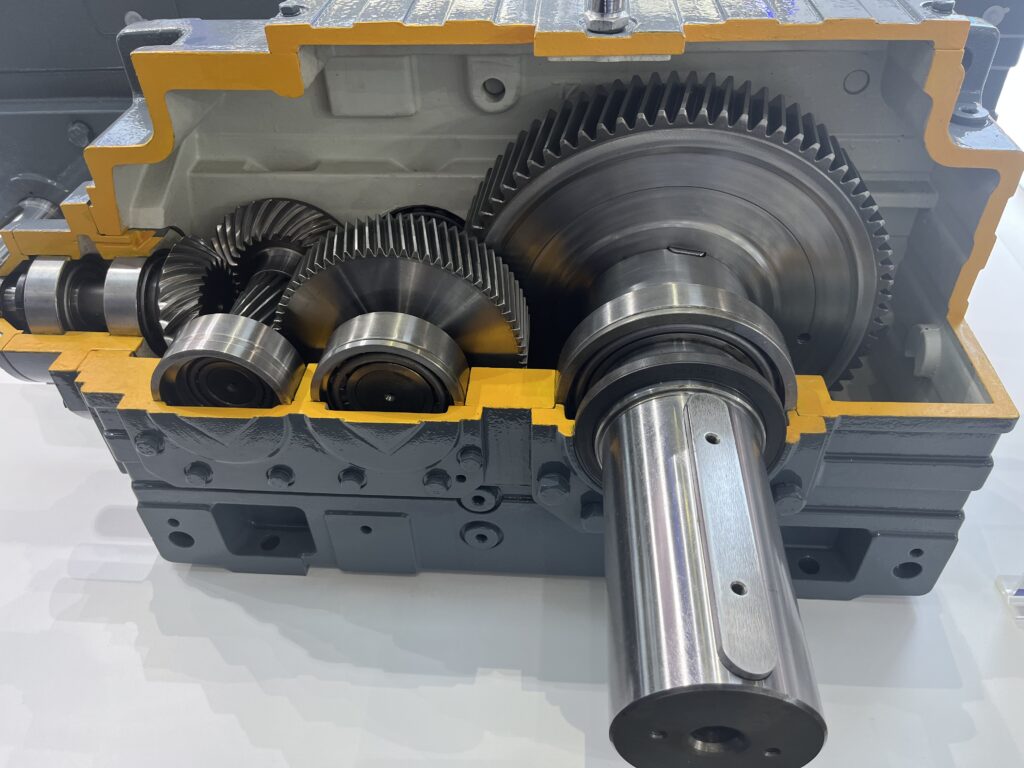Working Principle of Reducer
1.1 Operation Mode of ”Earth Rolling“
A reducer is a device where a high-speed input drives an output shaft. It is typically designed as a large gear within a geometric shape, with the number of teeth equal to the input gear’s number. The motion of the gears can be simply described as an ‘earth rolling’ operation, where the rotation of the input shaft gear causes the rotation of the output shaft gear.
1.2 Operation Mode of Helical Gears
Helical gears are a type of rotating mechanical gear. They have an inclined angle and can mesh with both the input shaft gear and the output shaft gear. When the speed of the helical gear is higher than that of the input shaft gear, it rotates the output shaft gear in the opposite direction. This operating mode allows the reducer to provide higher output torque in a compact size, making it more efficient in many applications.
1.3 Operation Mode of Planetary Gears
Planetary gears are considered the most commonly used mechanism in reducers. It consists of a circular gear (sun gear) and several gears (planet gears) rotating around it. The planet gears also have a rotation axis, allowing them to rotate around the sun gear. While the sun gear can rotate at a certain speed, the planet gears synchronized with it will rotate at a slower speed.
The working principle of the reducer is to convert high-speed input into low-speed and high-torque output. Different types of reducers can provide varying speed and torque outputs. Below, we will provide a detailed introduction to the structure of the reducer.
Structure of Reducers
2.1 Parallel Shaft Gear Reducer
Parallel shaft gear reducers are widely used in the mechanical driving processes. They employ two gears mounted on similar axes to transmit power and accomplish the task of reduction. This type of reducer includes levers, cams, and some ball bearings.
Parallel shaft gear reducers can offer various reduction ratios, catering to different machines, vehicles, and equipment with appropriate speeds. They are easy to maintain and have a long lifespan.
2.2 Planetary Gear Reducer
The planetary gear reducer is a structure commonly used to meet the requirements of high torque and low-speed output. It consists of a circular gear (sun gear) and several gears (planet gears) rotating around it. In this system, the input shaft rotates the sun gear, and the planet gears slide between the sun gear and a fixed support, thereby altering the speed and torque of the output shaft.
For applications demanding high torque and low-speed output, the planetary gear reducer is a highly suitable solution, known for its durability and reliability.
2.3 Bevel Gear Reducer
Bevel gear reducers typically use right-angle transmission to fulfill high torque requirements. It comprises two shafts intersecting at a right angle, with a driving gear mounted on one shaft to rotate one of the bevel gears. The other side of each bevel gear meshes with the output shaft, accomplishing the task of rotating the output shaft. Bevel gear reducers exhibit high reliability and durability, working effectively under very high loads.
2.4 Helical Bevel Gear Reducer
The helical bevel gear reducer is a complex structure composed of bevel gears, helical gears, input and output shafts, and couplings. If you need to output greater torque in high-load and low-speed environments, this type of reducer is an excellent choice. Additionally, due to its intricate structure, helical bevel gear reducers often come with higher costs.
Each of the mentioned reducer structures has its own advantages and suitable scenarios. Understanding the working principles and structures of different types of reducers enables better fulfillment of torque and speed requirements for machinery and equipment in practical applications.
Thank you for reading this article, and we look forward to serving you with our exceptional gear solutions. #BeyondGears
Read more:


